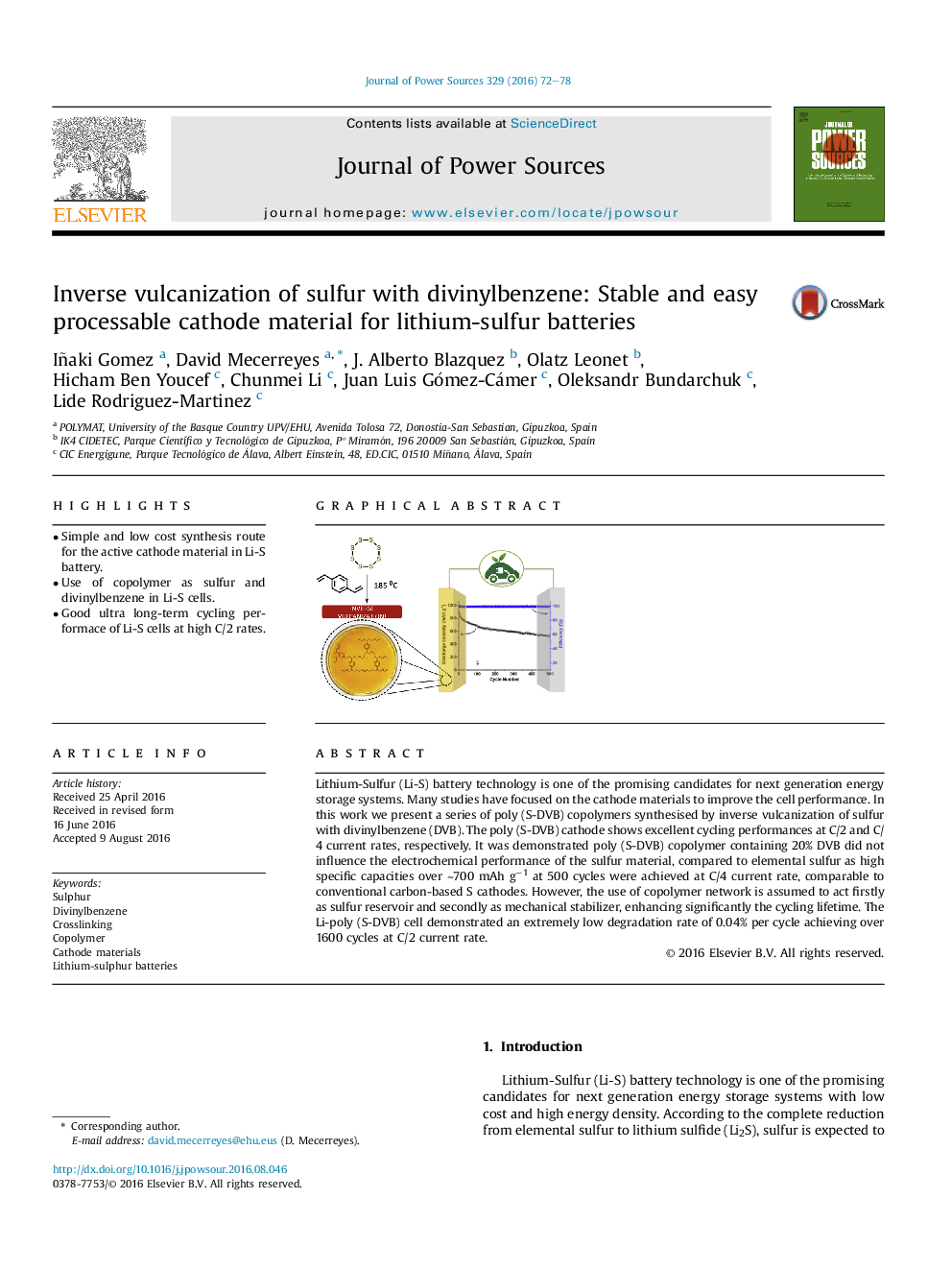| Article ID | Journal | Published Year | Pages | File Type |
|---|---|---|---|---|
| 1283396 | Journal of Power Sources | 2016 | 7 Pages |
•Simple and low cost synthesis route for the active cathode material in Li-S battery.•Use of copolymer as sulfur and divinylbenzene in Li-S cells.•Good ultra long-term cycling performace of Li-S cells at high C/2 rates.
Lithium-Sulfur (Li-S) battery technology is one of the promising candidates for next generation energy storage systems. Many studies have focused on the cathode materials to improve the cell performance. In this work we present a series of poly (S-DVB) copolymers synthesised by inverse vulcanization of sulfur with divinylbenzene (DVB). The poly (S-DVB) cathode shows excellent cycling performances at C/2 and C/4 current rates, respectively. It was demonstrated poly (S-DVB) copolymer containing 20% DVB did not influence the electrochemical performance of the sulfur material, compared to elemental sulfur as high specific capacities over ∼700 mAh g−1 at 500 cycles were achieved at C/4 current rate, comparable to conventional carbon-based S cathodes. However, the use of copolymer network is assumed to act firstly as sulfur reservoir and secondly as mechanical stabilizer, enhancing significantly the cycling lifetime. The Li-poly (S-DVB) cell demonstrated an extremely low degradation rate of 0.04% per cycle achieving over 1600 cycles at C/2 current rate.
Graphical abstractFigure optionsDownload full-size imageDownload as PowerPoint slide
